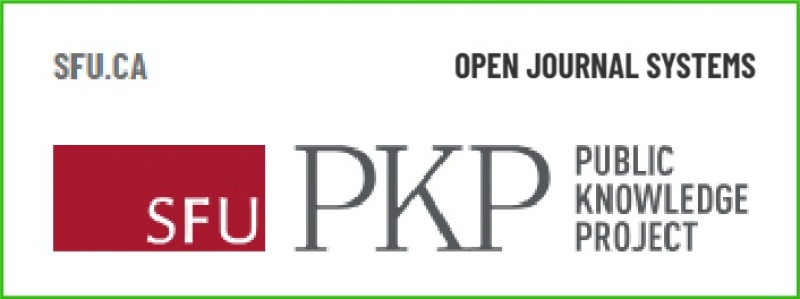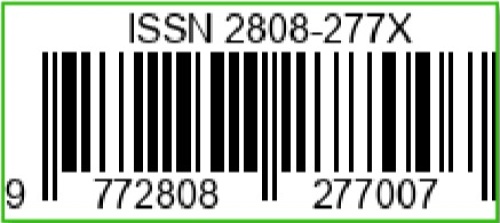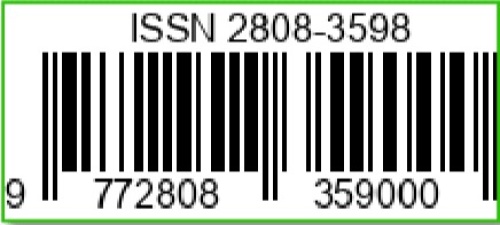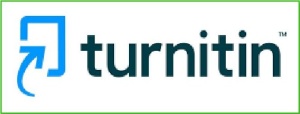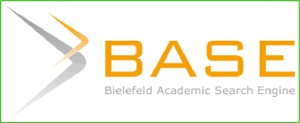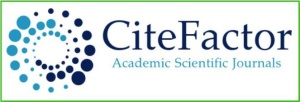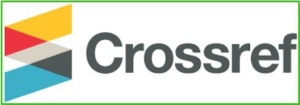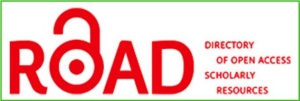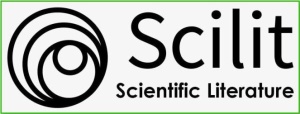Immunomodulatory and Antidiabetic Potential of Kratom (Mitragyna speciosa) on Animal Models: Potentials and Future Research
DOI:
https://doi.org/10.36312/biocaster.v5i3.463Keywords:
Animal Models, Antidiabetic, Immunomodulatory, Mitragyna speciosaAbstract
Kratom (Mitragyna speciosa) has been traditionally used for its analgesic and stimulant properties. Recent preclinical studies suggesting its potential as an anti-inflammatory and antidiabetic agent. A comprehensive search of PubMed, ScienceDirect, and Google Scholar (2010-2024) using keywords “Kratom”, “inflammation”, and “diabetes” identified 82 studies. After applying inclusion criteria (original research, English/Bahasa Indonesia, in vivo animal models investigating anti-inflammatory/antidiabetic effects) and excluding reviews, in vitro studies, and conference abstracts, 14 studies comprising 9 key articles on the pharmacological activities of Kratom were analyzed. Dosages ranged from 0,5 mg/g to 500 mg/kg across various extraction methods and treatment durations. Studies show that Kratom extracts can inhibit pro-inflammatory cytokines (IL-1β, TNF-α) via NF-κB, COX-2, and MAPK/ERK pathways. In diabetic models, Kratom reduced blood glucose levels by 15-45%, improved glucose tolerance, and enhanced antioxidant status. Aqueous and ethanolic extracts showed comparable efficacy, with optimal effects observed at 100-200 mg/kg doses. Despite these findings, safety concerns remain regarding toxicity, dependence, and drug interactions. Further toxicological studies and clinical trials are essential to validate its therapeutic potential. This review highlights the need for comprehensive research and regulatory evaluation to support the safe medicinal use of Kratom.
Downloads
References
Arief, I., & Kurnianto, E. (2022). Identification of Active Compound from Mitragyna speciosa Leave as Antiinflammation Agent: In Silico Study. Acta Chimica Asiana, 5(2), 218-223. https://doi.org/10.29303/aca.v5i2.139
Begum, T., Arzmi, M. H., Uddin, A. B. M. H., Khatib, A., Abbas, S. A., & Ahmed, Q. U. (2024). Mitragyna speciosa Korth Toxicity: Experimental Findings and Future Prospects. Journal of Taibah University Medical Sciences, 19(6), 1143-1156. https://doi.org/10.1016/j.jtumed.2024.12.002
Brown, P. N., Lund, J. A., & Murch, S. J. (2017). A Botanical, Phytochemical and Ethnomedicinal Review of the Genus Mitragyna Korth: Implications for Products Sold as Kratom. Journal of Ethnopharmacology, 202(1), 302-325. https://doi.org/10.1016/j.jep.2017.03.020
Chen, L., Fei, S., & Olatunji, O. J. (2022). LC/ESI/TOF-MS Characterization, Anxiolytic and Antidepressant-Like Effects of Mitragyna speciosa Korth Extract in Diabetic Rats. Molecules, 27(7), 1-16. https://doi.org/10.3390/molecules27072208
Chin, K. Y., & Lee, W. F. M. (2018). A Review on the Antinociceptive Effects of Mitragyna speciosa and its Derivatives on Animal Model. Current Drug Targets, 19(12), 1359-1365. https://doi.org/10.2174/1389450118666170925154025
Cinosi, E., Martinotti, G., Simonato, P., Singh, D., Demetrovics, Z., Urrestarazu, A. R., Bersani, F. S., Vicknasingam, B., Piazzon, G., Li, J., Yu, W. J., Fövény, M. K., Farkas, J., Giannantonio, M. D., & Corazza, O. (2015). Following “The Roots” of Kratom: The Evolution of an Enhancer from a Traditional Use to Increase Work and Productivity in Southeast Asia to a Recreational Psychoactive Drug in Western Countries. Biomed Research International, 2015(1), 1-11. https://doi.org/10.1155/2015/968786
Diana, P. P., & McClain, J. (2021). Antihyperglycemic Activity of the Ethanolic Extract of the Bark of Mitragyna ciliata (MYCA) in Albino Induced Diabetic Rats. International Journal of Scientific Research in Science and Technology, 8(3), 957-965. https://doi.org/10.32628/ijsrst2183133
Fitriyanti, F., & Wati, H. (2017). Efek Antihiperglikemik dari Ekstrak Batang Tanaman Sapat (Mitragyna speciosa) pada Mencit Jantan yang Diinduksi Streptozotocin. Jurnal Pharmascience, 4(2), 240-245. https://doi.org/10.20527/jps.v4i2.5777
Fleming, J. H., Babyak, C. M., & Alves, E. A. (2023). Analysis of Heavy Metals Content in Commercially Available Kratom Products in Richmond, Virginia. Forensic Chemistry, 33(1), 1-20. https://doi.org/10.1016/j.forc.2023.100474
Hanapi, N. A., Chear, N. J. Y., Azizi, J., & Yusof, S. R. (2021). Kratom Alkaloids: Interactions with Enzymes, Receptors, and Cellular Barriers. Frontiers in Pharmacology, 12(1), 1-21. https://doi.org/10.3389/fphar.2021.751656
Henningfield, J. E., Fant, R. V., & Wang, D. W. (2018). The Abuse Potential of Kratom According the 8 Factors of the Controlled Substances Act: Implications for Regulation and Research. Psychopharmacology, 235(2), 573-589. https://doi.org/10.1007/s00213-017-4813-4
Heywood, J., Smallets, S., & Paustenbach, D. (2024). Beneficial and Adverse Health Effects of Kratom (Mitragyna speciosa): A Critical Review of the Literature. Food and Chemical Toxicology, 192(1), 1-20. https://doi.org/10.1016/j.fct.2024.114913
Hossain, M. U., Hossain, M. S., Dey, S., Rahman, A. B. Z. N., Chowdhury, Z. M., Bhattacharjee, A., Ahammad, I., Islam, M. N., Moniruzzaman, M., Hosen, M. B., Ahmed, I., Das, K. C., Keya, C. A., & Salimullah, M. (2023). In Vivo and In Silico Experiment on Mitragyna speciosa Offers New Insight of Antidiabetic Potentials. BioRxiv, 2023, 1-41. https://doi.org/10.1101/2023.11.08.566341
Japarin, R. A., Harun, N., Hassan, Z., & Müller, C. P. (2023). The Dopamine D1 Receptor Antagonist SCH-23390 Blocks the Acquisition, but Not Expression of Mitragynine-Induced Conditioned Place Preference in Rats. Behavioural Brain Research, 453(1), 1-20. https://doi.org/10.1016/j.bbr.2023.114638
Kruegel, A. C., & Grundmann, O. (2018). The Medicinal Chemistry and Neuropharmacology of Kratom: A Preliminary Discussion of a Promising Medicinal Plant and Analysis of its Potential for Abuse. Neuropharmacology, 134(1), 108-120. https://doi.org/10.1016/j.neuropharm.2017.08.026
Kruegel, A. C., Uprety, R., Grinnell, S. G., Langreck, C., Pekarskaya, E. A., Rouzic, V. L., Ansonoff, M., Gassaway, M. M., Pintar, J. E., Pasternak, G. W., Javitch, J. A., Majumdar, S., & Sameš, D. (2019). 7-Hydroxymitragynine is an Active Metabolite of Mitragynine and a Key Mediator of its Analgesic Effects. Acs Central Science, 5(6), 992-1001. https://doi.org/10.1021/acscentsci.9b00141
Limcharoen, T., Pouyfung, P., Ngamdokmai, N., Prasopthum, A., Ahmad, A. R., Wisdawati, W., Prugsakij, W., & Warinhomhoun, S. (2022). Inhibition of α-Glucosidase and Pancreatic Lipase Properties of Mitragyna speciosa (Korth.) Havil. (Kratom) Leaves. Nutrients, 14(19), 1-15. https://doi.org/10.3390/nu14193909
Mahaprom, K., Chokpaisarn, J., Kunworarath, N., & Paduka, W. (2025). In Vivo Analgesic, Anti-Inflammatory Activities, and Phytochemical Profile of Thai Herbal Kratom Recipe, A Traditional Thai Herbal Medicine for Muscle Pain Relief. Journal of Ethnopharmacology, 343(1), 1-20. https://doi.org/10.1016/j.jep.2025.119442
Marampa, W. R., Ismail, S., & Amir, M. (2022). Uji Efek Antiinflamasi Ekstrak Etanol Mitragyna (Mitragyna speciosa) pada Mencit (Mus musculus) dengan Metode Induksi Xylene pada Telinga Mencit. Syntax Literate : Jurnal Ilmiah Indonesia, 7(6), 6831-6840.
Mat, N. H., Bakar, S. N. S., Murugaiyah, V., Chawarski, M. C., & Hassan, Z. (2023). Analgesic Effects of Main Indole Alkaloid of Kratom, Mitragynine in Acute Pain Animal Model. Behavioural Brain Research, 439(1), 1-20. https://doi.org/10.1016/j.bbr.2022.114251
Melchert, P. W., Zhang, Q., Mukhopadhyay, S., Kanumuri, S. R. R., McCurdy, C. R., & Markowitz, J. S. (2023). An In Vitro Evaluation of Kratom (Mitragyna speciosa) on the Catalytic Activity of Carboxylesterase 1 (CES1). Chemico-Biological Interactions, 384(1), 1-20. https://doi.org/10.1016/j.cbi.2023.110715
Ni’ma, N. S. (2024). Kratom (Mitragyna speciosa): Medicinal Marvel or Menace? Assessing Potency, Risk, and Future Prospect of Herbal Medicine. Indonesian Journal of Chemical Science, 13(1), 31-42.
Paankhao, N., Sangsawang, A., Kantha, P., Paankhao, S., Promsee, K., Soontara, C., Kongsriprapan, S., Srisapoome, P., Kumwan, B., Meachasompop, P., Phrompanya, P., Buncharoen, W., & Uchuwittayakul, A. (2024). Antioxidant and Antibacterial Efficiency of the Ethanolic Leaf Extract of Kratom (Mitragyna speciosa (Korth.) Havil) and its Effects on Growth, Health, and Disease Resistance against Edwardsiella tarda Infection in Nile Tilapia (Oreochromis niloticus). Fish & Shellfish Immunology, 152(1), 11-20. https://doi.org/10.1016/j.fsi.2024.109771
Rahmawati, S. I., Indriani, D. W., Ningsih, F. N., Hardhiyuna, M., Ahmadi, P., Rosyidah, A., Septina, E., Dharmayanti, N. L. P. I., Bayu, A., & Putra, M. Y. (2024). Dual Anti-Inflammatory Activities of COX-2/5-LOX Driven by Kratom Alkaloid Extracts in Lipopolysaccharide-Induced RAW 264.7 Cells. Research Square, 14(1), 1-25. https://doi.org/10.21203/rs.3.rs-4628929/v1
Raslina, H., Dharmawibawa, I. D., & Safnowandi, S. (2018). Diversity of Medicinal Plants in National Park of Rinjani Mountain in Order to Arrange Practical Handout of Phanerogamae Systematics. Bioscientist : Jurnal Ilmiah Biologi, 4(1), 1-6. https://doi.org/10.33394/bioscientist.v4i1.210
Saingam, D., Singh, D., Geater, A. F., Assanangkornchai, S., Jitpiboon, W., & Latkin, C. (2023). The Health Impact of Long-Term Kratom (Mitragyna speciosa) Use in Southern Thailand. Substance Use & Misuse, 58(10), 1212-1225. https://doi.org/10.1080/10826084.2023.2215301
Salim, H. M., Choirotussanijjah, C., Awwalia, E. S., & Alam, I. P. (2022). Anti-Inflammatory Effects and Potential Mechanisms of Mitragyna speciosa Methanol Extract on Λ-Karagenan-Induced Inflammation Model. Bali Medical Journal, 11(3), 1172-1175. https://doi.org/10.15562/bmj.v11i3.3535
Salim, H. M., Puspitarini, M. D., Setiwati, Y., & Shimabukuro, M. (2021). Antibacterial Mechanism of Kratom (Mitragyna speciosa) Methanol Extract on Streptococcus pneumoniae and Eschericia coli Bacteria. Biomolecular and Health Science Journal, 4(2), 98-103. https://doi.org/10.20473/bhsj.v4i2.28933
Singh, D., Narayanan, S., & Vicknasingam, B. (2016). Traditional and Non-Traditional Uses of Mitragynine (Kratom): A Survey of the Literature. Brain Research Bulletin, 126(1), 41-46. https://doi.org/10.1016/j.brainresbull.2016.05.004
Suhaimi, F. W., Yusoff, N. H. M., Hassan, R., Mansor, S. M., Navaratnam, V., Müller, C. P., & Hassan, Z. (2016). Neurobiology of Kratom and its Main Alkaloid Mitragynine. Brain Research Bulletin, 126(1), 29-40. https://doi.org/10.1016/j.brainresbull.2016.03.015
Tanna, R. S., Cech, N. B., Oberlies, N. H., Rettie, A. E., Thummel, K. E., & Paine, M. F. (2023). Translating Kratom-Drug Interactions: From Bedside to Bench and Back. Drug Metabolism and Disposition, 51(8), 923-935. https://dx.doi.org/10.1124/dmd.122.001005
Yuandani, Y., Jantan, I., Salim, E., Septama, A. W., Rullah, K., Nainu, F., Aluwi, M. F. F. M., Emran, T. B., Roney, M., Khairunnisa, N. A., Nasution, H. R., As’ad, M. F., Shamsudin, N. F., Abdullah, M. A., Rani, H. L. M., Chaira, D. M. A., & Aulia, N. (2024). Mechanistic Insights into Anti‐Inflammatory and Immunosuppressive Effects of Plant Secondary Metabolites and Their Therapeutic Potential for Rheumatoid Arthritis. Phytotherapy Research, 38(6), 2931-2961. https://doi.org/10.1002/ptr.8147
Zhang, P., Wei, W., Zhang, X., Wen, C., Ovatlarnporn, C., & Olatunji, O. J. (2023). Antidiabetic and Antioxidant Activities of Mitragyna speciosa (Kratom) Leaf Extract in Type 2 Diabetic Rats. Biomedicine and Pharmacotherapy, 162(1), 1-14. https://doi.org/10.1016/j.biopha.2023.114689
Downloads
Published
How to Cite
Issue
Section
License
Copyright (c) 2025 Annisa Nurul Ilmi, Febry Rahmadhani Hasibuan, Aloysia Sri Pujiyanti, & Reni Kurniati

This work is licensed under a Creative Commons Attribution-ShareAlike 4.0 International License.
-
Attribution — You must give appropriate credit, provide a link to the license, and indicate if changes were made. You may do so in any reasonable manner, but not in any way that suggests the licensor endorses you or your use.
-
ShareAlike — If you remix, transform, or build upon the material, you must distribute your contributions under the same license as the original.


